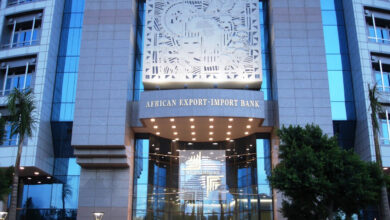GCR 20 Entities Accounted for 58.3% of Sterling Bank Loans in 2020

Recently, GCR Ratings in a report affirmed the Sterling Bank’s national scale long-term and short-term issuer ratings of BBB (NG) and A3 (NG) respectively. It also noted that only 20 obligors accounted for 58.3% of loans in Sterling Bank Plc.
Sterling is a tier-2 bank, with a modest market share of 3.4% and 2.6% measured by customer deposits and total assets respectively. At the end of 2020, total loan book reached NGN646.9bn (from NGN596.8bn in the prior year), with much of these increase on the back of the Central Bank of Nigeria’s (VBN) policy of minimum loan to deposit ratio of 65%.
In H1 ’21, Sterling Bank reported a 2.62% y/y increase in net interest income to NGN31.0bn (versus NGN30.9bn in H1 ’20). This was despite the slowdown in the interest rate environment while payments to providers of funds also dropped. Down the income statement, the company’s profit after tax (PAT) came in at NGN5.7bn H1 ’21 (+5% y/y from NGN5.4bn in H1 ’20).
Also Read: Sterling Bank To Restructure As HoldCo
GCR has affirmed its credit rating on Sterling Bank was affirmed the bank’s national scale long-term and short-term issuer ratings of BBB (NG) and A3 (NG) respectively; with the outlook revised to stable from negative. This is because of the company’s good business profile, sound risk position, stable funding and liquidity, albeit counterbalanced by the relatively moderate capitalisation and high loan book concentrations.
Add to this, the company has a solid competitive position which is supported by its strong track record and solid earnings trajectory over the last five years. Based on GCR’s estimation, the bank’s CAR is between 13.9% and 14.9%. GCR analysts forecasts this to remain within the 13%-14% range over the rating horizon, barring any injection of additional tier 1 capital or significant improvement in an internal capital generation.
The bank has a low non-performing loan ratio (NPL ratio) of 1.9% as of FY ’20, (from 2.2% in FY ’19), significantly below the regulatory tolerable limit of 5%, and broadly compares favourably with the industry average of about 6%. The rating agency also spotted that the bank’s credit losses registered at 1.3% in 2020 from 0.9%, relative to the industry average of about 3% in 2020. “Over the next 12-18 months, GCR expects the bank’s NPL ratio and credit losses to remain within a similar range”.
Whilst the bank’s proportion of foreign currency loans to total loans grew to 23.7% as of 2020, (from 22.9% in 2019), it ranks favourably compared to the industry average of 35%. This is means that on average, the lender is less exposed exchange rate shocks. However, a key risk was that only 20 obligors accounted for 58.3% of the loan portfolio. This indicate that the loan portfolio is highly concentrated.
Also Read: Wema Bank to Sell N40Bn Shares, sets sight on acquiring Fintech
Sterling Bank single largest obligor constituted 24% of shareholders’ funds as of FY’20, breaching the regulatory threshold of 20%. Management disclosed that it will normalise the portfolio going forward.
On the positive side, the bank’s market-sensitive income (trading gains) constituted only a moderate 13.4% of total operating revenues as of 2020 (from 6.0% in FY 19’), which indicates that the lender has a minimal exposure to market risk. In H1 ‘21, the bank’s trading income printed at NGN2.6bn (down 35% y/y from N3.9bn H1 ’20).
GCR Ratings assessed the bank’s funding and liquidity at the intermediate level, reflecting satisfactory liquid asset coverage of the funding base. It said the funding structure is broadly comparable with peers, as customer deposits comprised 84.4% of the funding base as of 2020, from 87.7%.
The deposit book is relatively diversified, with the single and top twenty largest depositors contributing 5.1% and 19.3% to total deposits respectively as of the financial year 2020. As of 31 December 2020, the GCR liquid asset coverage of total wholesale funding and customer deposits stood at 2.8x and 35% respectively, reflecting the bank’s moderately positive liquidity level.






